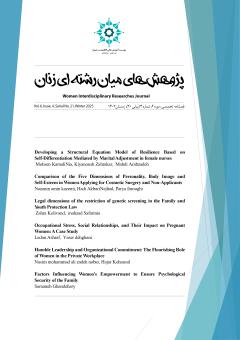Legal dimensions of the restriction of genetic screening in the Family and Youth Protection Law
Subject Areas :Zahra Kolivand 1 , Mahzad Safarinia 2
1 - Master's student, Family Law major, Non-Profit Welfare School, Tehran, Iran.
2 - PhD in International Law, University of Tehran ,Assistant Professor, Faculty of Refah Faculty, Director of Law Department of Refah Faculty
Keywords: Abortion, Screening, Healthy Family, Genetics, Young Population.,
Abstract :
Abstract
Early identification of prenatal diseases and timely treatment of genetic abnormalities are among the main challenges of the healthcare system. In the field of medicine, screening is defined as a strategy for examining the population to identify individuals at risk of a health-threatening condition, with the aim of early detection for intervention or early disease control and its complications. This process is carried out in the form of a series of screening tests in different months of pregnancy. Laws related to genetic screening have existed in our country for decades, whereby couples were financially supported to conduct relevant tests before the birth of their child and during the fetal stage. In the second half of 1400 (Shamsi Calendar), the Law on Family and Youth Protection of the Population was approved by the Parliament, which, pursuant to Articles 53 and 56 of this law, created restrictions on genetic screening, and Article 56 of this law repealed the Medical Abortion Law of 1384 (Shamsi Calendar). Article 53 of this law basically prohibits screening for diseases that lead to the birth of a baby with a difficult-to-treat disease, and in addition, doctors and health workers are not required to recommend screening. As a result, discussions around hardship, elective abortion in cases of abnormalities, and treatments that impose difficulties on families have been restricted. This research aims to examine the need to amend Articles 53 and 56 of the Population Youth and Family Support Plan and address women's challenges in the field of genetics and therapeutic abortion, using a descriptive-analytical method and data collection.
